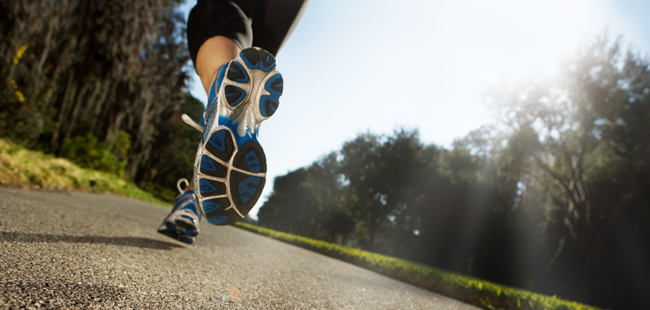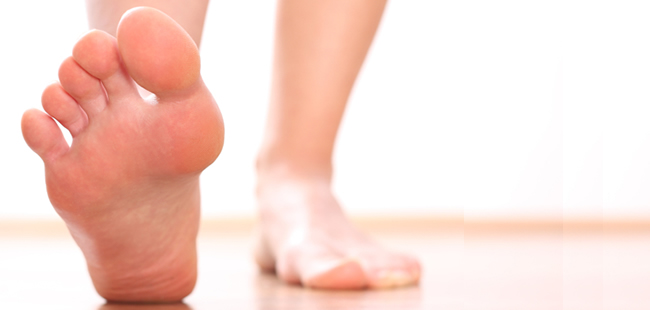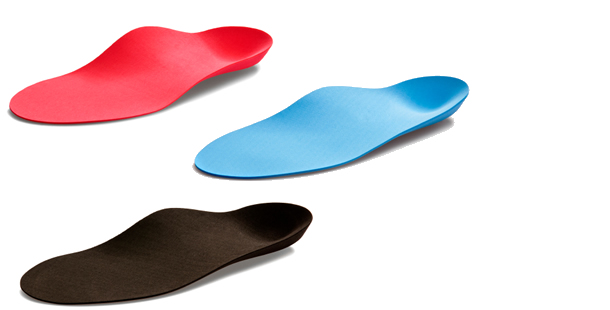Underpronation
Underpronation is a term often used by runners, joggers and sports enthusiasts to describe the gait cycle when there is a lack of pronation. Pronation is the natural rolling motion of the foot as it moves from the heel to the toe, and it is important for shock absorption and proper weight distribution. With underpronation the body weight remains on the outside of the foot, and while this is not necessarily bad, it can make running injuries more likely to be sustained.
Underpronation and the Gait Cycle
The gait cycle can be conveniently divided into two separate phases; the stance phase and the swing phase. The stance phase is approximately 60 percent of the gait cycle, with the remaining 40 percent comprising the swing phase. The stance phase includes two periods where both feet are on the ground at the same time, although when running the stance phase is reduced and there is a period – called the flight phase – where neither foot is on the ground. When running there is only one period per cycle when both feet are in contact with the ground.
The Gait Cycle – Stance Phase
- Heel strike
- Flat foot
- Mid stance
- Toe off and propulsion
Gait Cycle – Swing Phase
- Acceleration
- Mid Swing
- Deceleration
Underpronation occurs during the stance phase, and is where the heel contacts the ground and instead of the foot turning slightly so that the push off is made from the inside edge of the foot (first and second toe) the weight remains on the outside edge of the foot with little to no roll at all. The push off or propulsion phase tends to take place from the little toes, which are not best designed for dealing with the forces. Generally underpronation is considered to affect an individual when there is less than a 15 degree inward roll, which means that it is the smaller toes which do all the work in the toe off or propulsion phase rather than the big toe and second toe.
Types of Gait
- Overpronation
- Neutral
- Underpronation (Supination or oversupination)
Is Underpronation Bad?
The problem with underpronation – or supination – is that the foot is not in the right position to allow for optimum weight distribution, and the structures of the foot which help with the cushioning of shocks (the foot arches and plantar fascia) cannot work efficiently. During a normal walking or running gait, as the foot moves through the stance phase it will pronate or twist. The arches of the feet will flatten slightly which helps to cushion the body weight properly. When the weight remains on the outside of the foot this does not happen and there is very little flattening of the foot arches. This places an increased strain not only on the feet, but also the ankles, knees and hips. Underpronations means there is very little ankle stability and ankle movement throughout the stride. Underpronators have a tendency to be heavy footed and have high foot arches.
While underpronators may be able to walk or run without any discomfort or pain, they are at an increased risk of developing muscle injuries, especially when training heavily or when running long distances.
What Causes Underpronation
There are many reasons why underpronation occurs, although it is commonly associated with high foot arches and rigid feet. However not all people with high foot arches will be underpronators. People with low arches can also underpronate, although low arch height will more than likely result in overpronation or excessive pronation of the foot. Underpronation can be caused by structural abnormalities in the feet or when previous injuries to the feet have damaged the tendons and muscles, or when there is muscle imbalance or a particularly tight Achilles tendon. It is also possible that only one foot will display underpronation, with the other neutral. People who are bow-legged tend to be more likely to exhibit underpronation, as will anyone whose lower body bone structure involves internal rotation. There will be very little ankle rotation when there is underpronation.
Health Problems Caused by Underpronation
The health problems and injuries commonly experienced by underpronators are similar to those suffered by overpronators. Whenever the gait is not at the optimum, excessive forces are dealt with by parts of the feet that are not well equipped to deal with the strain. The problem is not confined to the feet, as the underpronation gait means that the ankles are under a constant strain, as are the shins, knees, and hips and even the lower back may suffer.
Anyone who has a gait which involves underpronation will face an increased risk of developing the following musculoskeletal problems:
- Iliotibial Band Syndrome
- Shin Splints
- Muscle strain and sprains
- Ankle inversion sprains
- Knee, hip and ankle pain
- Lower back pain
- Metatarsal stress fractures
- Heel stress fractures
- Hip stress fractures
- Plantar fasciitis
- Foot arch pain
- Achilles tendonopathy
- Metatarsalgia
Underpronation Tests
A good rough and ready test which can be completed at home to check for an underpronation gait is to check the foot arches. Simply wet the feet and stand on a surface which will show the footprints. If there is an excessive narrowing of the footprint in the middle, you have high arches and will be likely to suffer from underpronation.
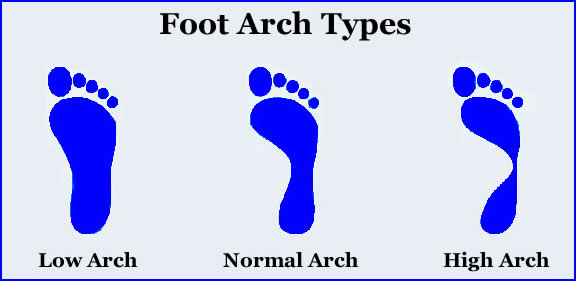
However since not all people with high arches will underpronate, the best way to check is to have someone observe you running on a treadmill from behind, or to get a gait analysis completed by a podiatrist or sports therapist. Some running shoe stores will also provide this service.
A more reliable way to tell if underpronation is an issue is to look at the wear pattern of the outsoles of a pair of old running shoes. Underpronators will show excessive wear on the heel and the outside edge of shoes. Overpronators on the other hand will tend to wear the outside of the heel and the inside of the toe area.
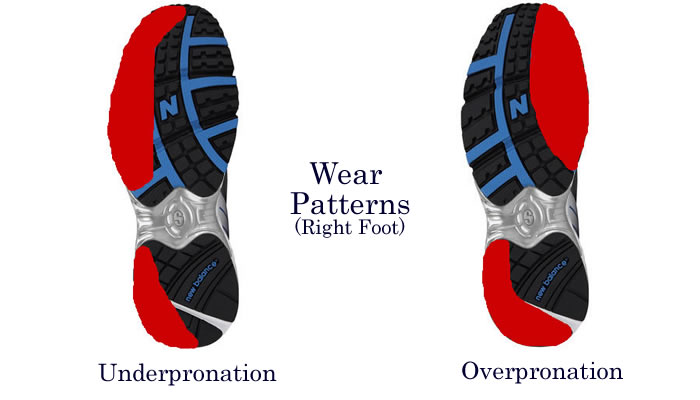
What Can Be Done About Underpronation
There are two main corrective techniques which can be adopted when there is underpronation, and while chiropractic manipulation and physical therapy may help to restore movement to the feet, most people choose either to wear orthotic insoles or underpronation shoes. Although high arches sound like they will need strong arch support, arch supports do not need to be worn by most supinators. Underpronation is also frequently associated with a tight Achilles tendon and stretching the Achilles tendon and calf muscles is all the more important before and after exercising for people who are prone to underpronation.
Since underpronation results in unstable ankles, stability shoes may seem like a good choice but these should be avoided at all costs. Motion control shoes similarly should not be worn as these can make matters far worse. Underpronation requires a highly flexible neutral running shoe. Most running shoes fall into the stability category, so it is important to check to make sure that shoes are designed for neutral runners. Shoes should be as lightweight as possible to promote inward movement of the feet. As a general rule of thumb, the heavier the shoe, the more support and stability they have and the more resistance they will offer against overpronation – exactly the opposite of what an underpronator will need. Look for shoes which claim they are highly flexible or are specifically designed for supinators or underpronators.
Orthotics for underpronation are also highly beneficial as they will help to guide the foot in a more natural way, and will improve weight distribution. Orthotics can be slipped inside standard shoes and will serve to improve ankle stability and provide extra cushioning to compensation for a natural lack of it from an underpronation gait. Orthotics for underpronators are best if they are custom made, although these can be expensive. Many standard insoles may be sufficient, unless the feet are highly rigid and underpronation is severe.
